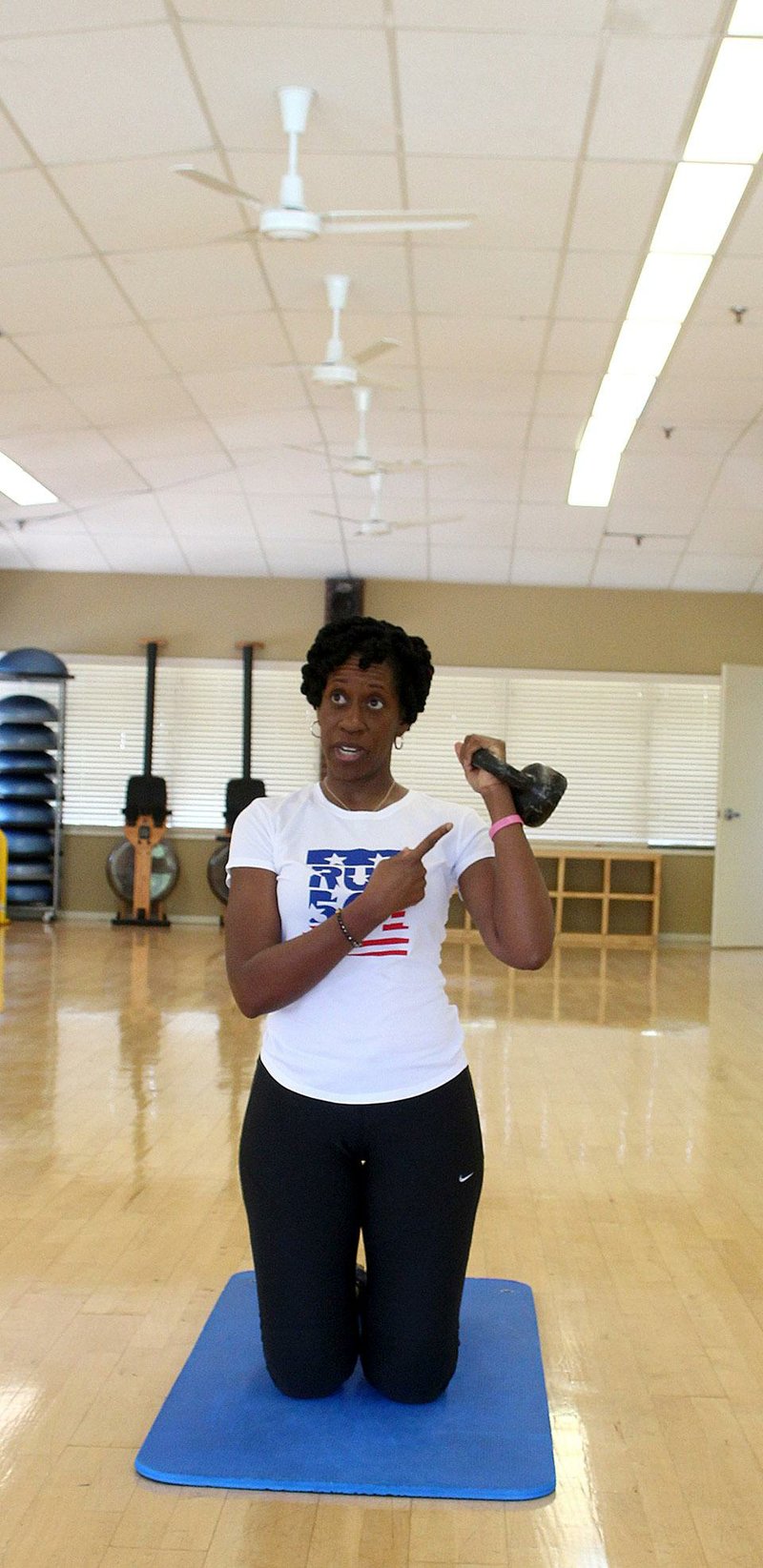Some of the best fitness moves reflect everyday activities. After all, what sense does it make to perform repetition after repetition of seated one-arm bicep curls if you'll never need that movement outside of the gym?
This week, I'll discuss the advantages of training in a more functional way. Plus, I'll introduce an exercise that represents functional fitness and uses a kettlebell.
When I sit down with a new client to discuss goals, the idea of performing their daily activities more efficiently almost never comes up. It's typically about weight loss, reduced disease risk or training for a specific event. Those are good goals. But I always find myself steering the conversation to include information about the individual's daily activities -- because they are so relevant in the big picture.
The movements one does throughout the day have an enormous impact on overall biomechanics and well being.
If the person has an office job and is older than 45, I can almost always see their occupation reflected in their posture. There are biomechanical markers. Tight hamstrings, shortened hip flexors and tight pectoral are just a few of the many muscular commonalities that accompany office work.
This information is a critical part of the evaluation we should do before we design an exercise program.
The problem is, most of the office workers aren't stretching their hamstrings, hip flexors or chest. In fact, many of them engage in strength training for these areas, exacerbating their deficiencies. Rather than performing exercises you think will help your appearance, I encourage you to develop a program that reflects your daily activity patterns.
For an office worker with the typical desk-job issues, I recommend doing yoga two to three days per week along with low-impact cardiovascular activity, to start. In the absence of any contraindications for these activities, the individual should begin to develop better flexibility and cardiovascular endurance. This attention to two essential, foundational abilities is a great place to begin.
That said, this week's exercise is for clients who already have that foundation of fitness and are at the next level. This movement is perfect for people looking to enhance total strength and functional performance based on their daily activity patterns. For office workers, moves like this will strengthen the quadriceps and core together.
1. Select one medium-weight kettlebell and kneel on an exercise mat. Hold the kettlebell in your right hand with the weight resting on your right shoulder.
2. Stand up by stepping forward with the right foot.
3. As you stand, extend the kettlebell overhead.
4. Kneel back down, one knee at a time and return the kettlebell to the starting position against your right shoulder.
5. Do this exercise for 12 repetitions, then switch sides with the kettlebell. For the second set of 12 reps, step forward with the left foot first.
This movement would be a great addition for an individual whose training program is already addressing flexibility and cardiovascular needs. This total body exercise will definitely add a level of functionality -- from which anyone could benefit. I know I could.
Matt Parrott has a doctorate in education (sport studies) and a master's in kinesiology and is certified by the American College of Sports Medicine.
vballtop@aol.com
ActiveStyle on 09/22/2014
